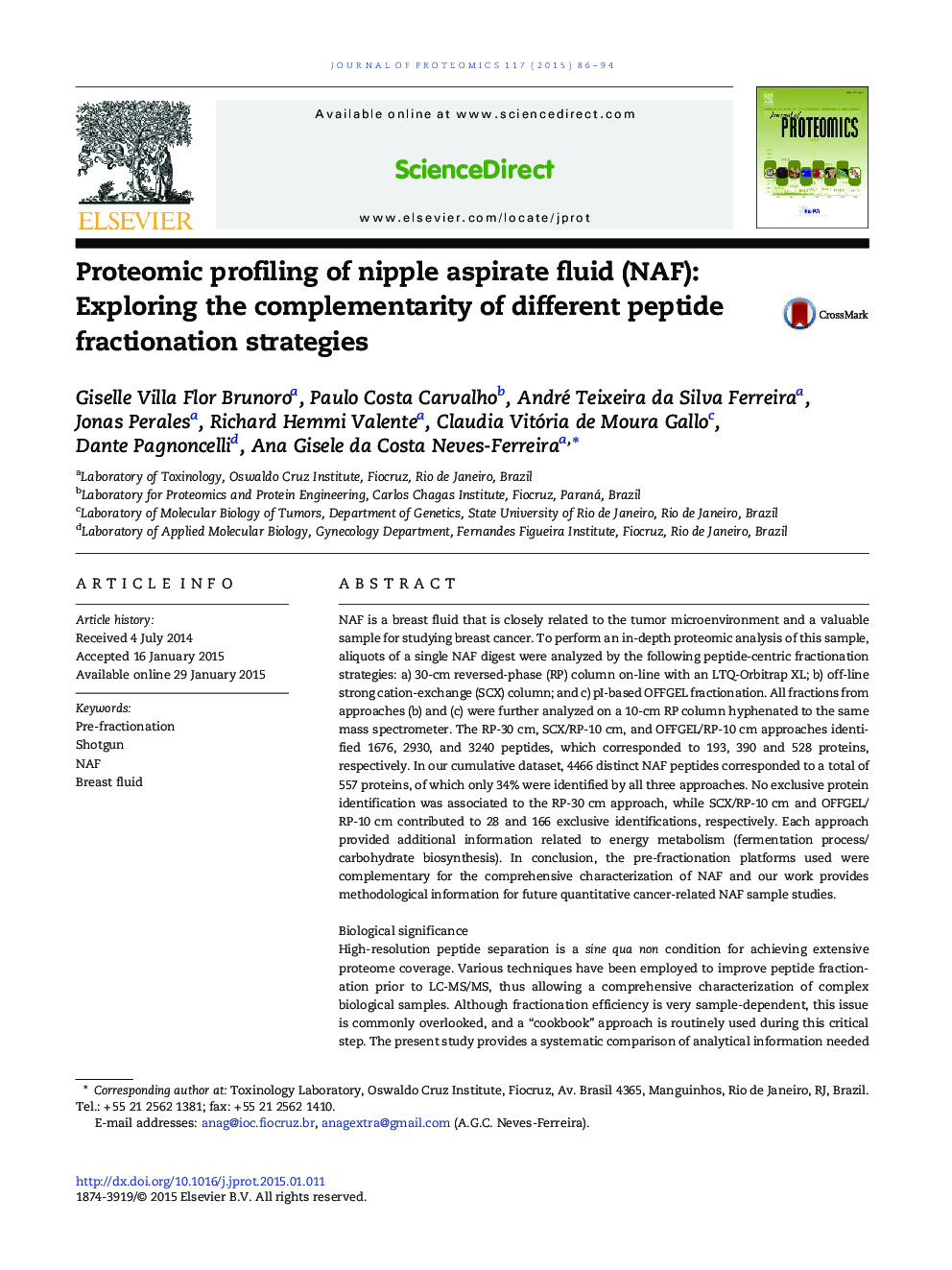| کد مقاله | کد نشریه | سال انتشار | مقاله انگلیسی | نسخه تمام متن |
|---|---|---|---|---|
| 1225705 | 1494763 | 2015 | 9 صفحه PDF | دانلود رایگان |

• Different proteomic strategies for improved NAF sample analysis are evaluated.
• The importance of optimizing sample-specific fractionation protocols is reinforced.
• An optimized proteomic protocol for studying cancer-related NAF samples is proposed.
NAF is a breast fluid that is closely related to the tumor microenvironment and a valuable sample for studying breast cancer. To perform an in-depth proteomic analysis of this sample, aliquots of a single NAF digest were analyzed by the following peptide-centric fractionation strategies: a) 30-cm reversed-phase (RP) column on-line with an LTQ-Orbitrap XL; b) off-line strong cation-exchange (SCX) column; and c) pI-based OFFGEL fractionation. All fractions from approaches (b) and (c) were further analyzed on a 10-cm RP column hyphenated to the same mass spectrometer. The RP-30 cm, SCX/RP-10 cm, and OFFGEL/RP-10 cm approaches identified 1676, 2930, and 3240 peptides, which corresponded to 193, 390 and 528 proteins, respectively. In our cumulative dataset, 4466 distinct NAF peptides corresponded to a total of 557 proteins, of which only 34% were identified by all three approaches. No exclusive protein identification was associated to the RP-30 cm approach, while SCX/RP-10 cm and OFFGEL/RP-10 cm contributed to 28 and 166 exclusive identifications, respectively. Each approach provided additional information related to energy metabolism (fermentation process/carbohydrate biosynthesis). In conclusion, the pre-fractionation platforms used were complementary for the comprehensive characterization of NAF and our work provides methodological information for future quantitative cancer-related NAF sample studies.Biological significanceHigh-resolution peptide separation is a sine qua non condition for achieving extensive proteome coverage. Various techniques have been employed to improve peptide fractionation prior to LC-MS/MS, thus allowing a comprehensive characterization of complex biological samples. Although fractionation efficiency is very sample-dependent, this issue is commonly overlooked, and a “cookbook” approach is routinely used during this critical step. The present study provides a systematic comparison of analytical information needed for the successful large-scale differential proteomic analysis of NAF samples from breast cancer patients, a precious and volume-limited biological sample. It reinforces the importance of optimizing sample-specific fractionation protocols for information retrieval from mass spectrometric analysis.
Figure optionsDownload high-quality image (231 K)Download as PowerPoint slide
Journal: Journal of Proteomics - Volume 117, 18 March 2015, Pages 86–94